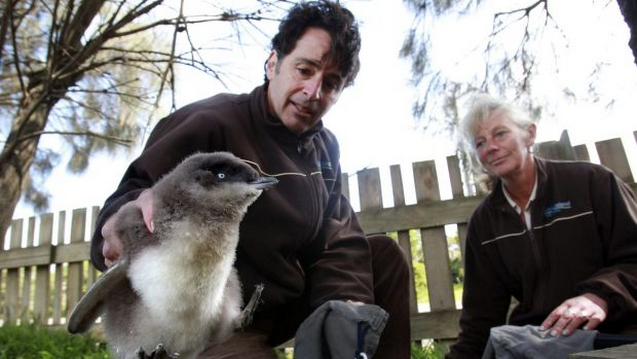Six ocean hot spots that teem with the biggest mix of species are getting hit hardest by global warming and industrial fishing, an international study co-authored by an Australian scientist has found.
The study published in the journal Science Advances looked at 2100 species of fish, seabirds, marine mammals and even plankton to calculate Earth's hot spots of marine biodiversity.
 |
| Research scientist Andre Chiaradia and research technical officer Leanne Renwick at the Penguin Parade Reserve on Phillip Island. Photo: Rebecca Hallas |
"Human activities drive environmental changes at scales that could potentially cause ecosystem collapses in the marine environment," the study says.
Co-author Andre Chiaradia, a senior scientist and penguin expert at the Phillip Island Nature Parks in Australia, said: "In those hot spots, the changes are already happening.
"They are the most at risk."
Researchers found the liveliest ocean hot spot also happens to be where the science of evolution sprouted: the Pacific Ocean off the central South American coast.
Other hot spots include the the south-western Pacific off Australia's southern and eastern coast, south-western Atlantic Ocean off Argentina; the western Indian Ocean off the African coast; the central western Pacific Ocean surrounding Malaysia, Indonesia and the Philippines and the Oceania region of the Pacific around the international date line.
Four of the six hot spots are in the Pacific; all are either in the southern hemisphere or just north of the equator.
"What makes this biodiversity? It's the isolation," Dr Chiaradia said.
"On land, we have kangaroos and weird animals like the platypus. And in the ocean it's not different."
Penguins, which are near the top of the food chain, were a good example of the impact of changing water temperatures and currents, Dr Chiaradia said.
Warm El Nino waters have decimated Galapagos penguins and the population of southern African penguins had dropped by about 90 per cent in just 20 years.
Links

No comments:
Post a Comment